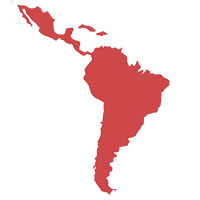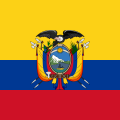Brazil – COP21 Profile
admin | December 2, 2015.
Brazil is the seventh-biggest emitter of greenhouse gases in the world. Emissions from the country’s energy sector continue to grow, and have increased by 44% in the past decade.
Brazil is home to a large part of the Amazon rainforest, and 35% of the country’s emissions came as a result of deforestation. Over the past decade, however, Brazil has reduced its emissions from the land sector by about 85%. This is the largest decline in greenhouse gas emissions of any country in the world, when accounting for Land Use, Land-Use Change and Forestry (LULUCF).
That said, there remains much work to be done to protect the Amazon rainforest, and Brazil has pledged to stamp out all illegal deforestation by 2030 in its Intended Nationally Determined Contributions (INDC) submission.
The impacts of climate change have become more evident in recent years with the increase of extreme weather events. For example, the number of flooding events has increased by 80% during the 1990s and 2000s. Many Brazilian communities remain highly vulnerable to the impacts of extreme weather events, due to issues such as poverty and poor urban planning.
In 2016, the world’s attention will turn to Brazil as it hosts the Olympic Games in Rio de Janeiro. In Paris, Brazil is seeking a new climate agreement that not only combats climate change, but also supports sustainable development.
- Capital: Brasilia
- Population: 204 million
- UNFCCC classification: Non-Annex I Party
- Member of the G20, G77, BRICS and CELAC
- Country groupings in UNFCCC: G77 and BASIC
- Head of State and Government: President Dilma Rousseff
- Chief Negotiator: Ambassador Jose Antonio Marcondes de Carvalho (Assistant Secretary-General for the Environment, Energy, Science and Technology).
Emissions Profile
When considered on a per capita basis, Brazil’s greenhouse gas emissions hover around the world average.
- Annual gross greenhouse gas emissions, incl. LULUCF (2012): 1,823.15 megatonnes [Country rank: 7th]
- Annual greenhouse gas emissions per capita, incl. LULUCF (2012): 9.18 tonnes [Country rank: 52nd]
UNFCCC Profile
Brazil considers adaptation to be a fundamental element of efforts to tackle climate change, and would like to see the importance of adaptation embedded in the Paris agreement.
While Brazil supports a “common” agreement being reached in Paris, or in other words an agreement in which all countries participate, it also expects that the expectations placed on developed and developing countries will be differentiated to account for each country’s unique national circumstances.
Brazil proposed a “concentric approach” to differentiation in Lima. This would allow developing countries to gradually assume further obligations, in accordance with their development circumstances. South-South cooperation is important for Brazil, and it has been playing a role in examining how developing countries can support each other with climate change solutions.
Pre-2020 commitments:
– In its Copenhagen Accord pledge, Brazil committed to reducing emissions by between 36.1% and 38.9% below business-as-usual levels by 2020.
– Status of ratification of the second commitment period of the Kyoto Protocol (the Doha Amendment): Not accepted.
INDC commitments:
– Economy-wide target of a 37% reduction in greenhouse gas emissions by 2025 and a 43% reduction by 2030, based on estimated emissions levels of 2.1 gigatonnes of equivalent carbon dioxide (CO2e) in 2005.
– Energy: 45% of renewables in the energy matrix by 2030.
– Forests: to halt illegal deforestation and restore and reforest 12 million hectares of forests by 2030.
– Agriculture: to restore 15 million hectares of degraded pasturelands by 2030 and enhance 5 million hectares of integrated-cropland-livestock-forestry systems (ICLFs) by 2030.
– Brazil is the first major emitting developing country to commit to a long-term goal, in line with G7 countries, of transitioning to a low-carbon economy by the end of the century.
Energy Profile
Brazil’s total energy consumption has more than doubled since 1990. Increases in renewable energy and hydroelectricity generation have been overshadowed by increases in oil and gas consumption. Severe droughts in Brazil, including the worst in over 80 years, have left dams depleted and reduced its ability to generate hydroelectricity.
While Brazil has been largely successful in lifting its population out of energy poverty, approximately 1 million people still do not have access to electricity.

Data source: BP 2014.
Created in conjunction with WWF.














comment